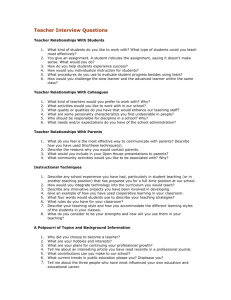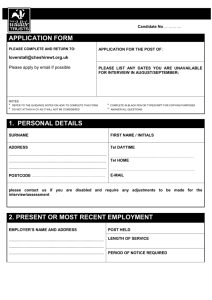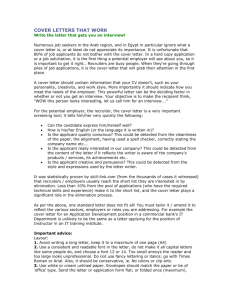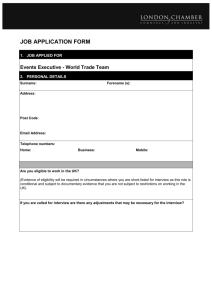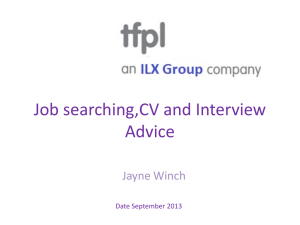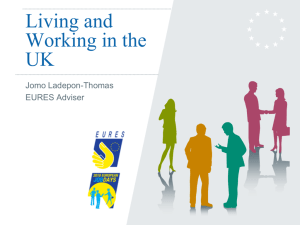Chapter Eight What led to the unionization of the U.S. auto industry
advertisement
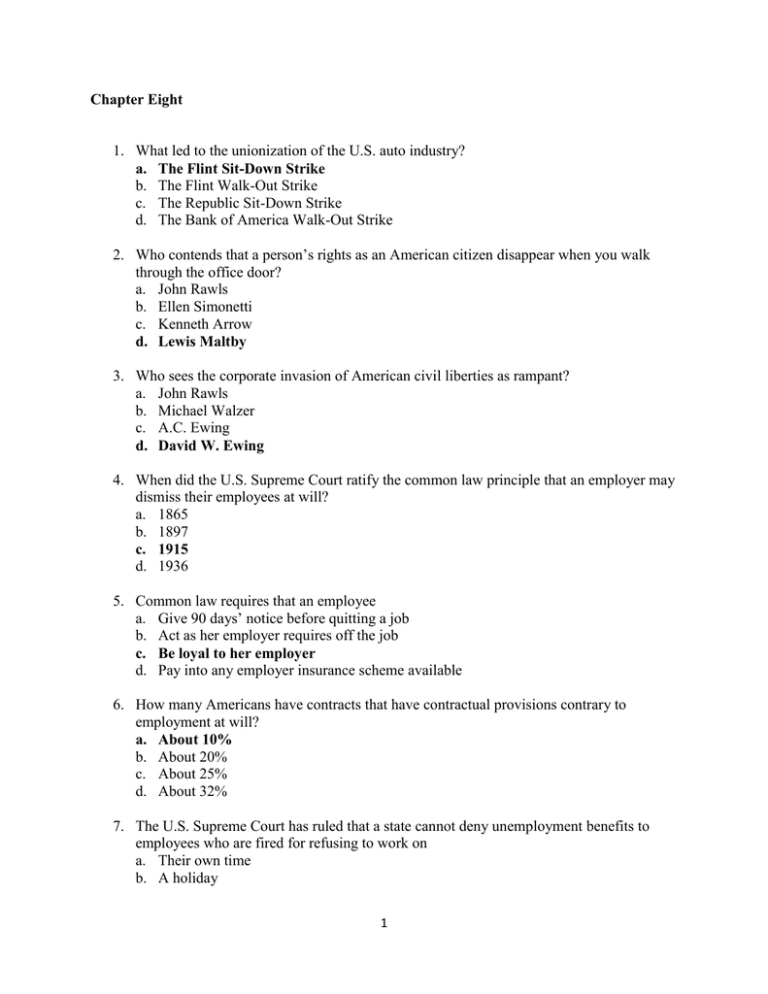
Chapter Eight 1. What led to the unionization of the U.S. auto industry? a. The Flint Sit-Down Strike b. The Flint Walk-Out Strike c. The Republic Sit-Down Strike d. The Bank of America Walk-Out Strike 2. Who contends that a person’s rights as an American citizen disappear when you walk through the office door? a. John Rawls b. Ellen Simonetti c. Kenneth Arrow d. Lewis Maltby 3. Who sees the corporate invasion of American civil liberties as rampant? a. John Rawls b. Michael Walzer c. A.C. Ewing d. David W. Ewing 4. When did the U.S. Supreme Court ratify the common law principle that an employer may dismiss their employees at will? a. 1865 b. 1897 c. 1915 d. 1936 5. Common law requires that an employee a. Give 90 days’ notice before quitting a job b. Act as her employer requires off the job c. Be loyal to her employer d. Pay into any employer insurance scheme available 6. How many Americans have contracts that have contractual provisions contrary to employment at will? a. About 10% b. About 20% c. About 25% d. About 32% 7. The U.S. Supreme Court has ruled that a state cannot deny unemployment benefits to employees who are fired for refusing to work on a. Their own time b. A holiday 1 c. A Sabbath day d. Sunday 8. The First Amendment does not protect speech a. Public employees make in the course of their official duties b. Public employees make contributing to civic discourse c. Private employees make in the course of their duties d. Private employees make contributing to civic discourse 9. Acting morally is generally a. Required by U.S. companies b. Required by the U.S. Government c. In one’s long-term best interests d. Not in one’s long-term best interests 10. Job specifications to which the civil rights law does not apply are called a. BFOOs b. BFOQs c. BFFOs d. BFQQs 11. How many employees must a company have to fall under the jurisdiction of the Americans with Disabilities Act? a. b. c. d. 12 15 20 25 12. Jazzercise now agrees that a. Being overweight need not be unhealthy b. People should not be fired because of their looks c. People of varying weights can be fit d. People of varying races can communicate with the public 13. According to Charles Arons, the hurdles men face returning to the job market are ow many times greater than those faced by women? a. Two b. Three c. Four d. Five 14. Which court case led U.S. firms to retreat from administering preemployment tests? a. Griggs b. Roe c. Brown 2 d. Duke 15. Francis Bacon referred to biases as a. Work of idle minds b. Idols of the mind c. Pleasures of the idle d. Immoral idolatry 16. Who thought the human understanding was like a false mirror? a. Bacon b. Shakespeare c. Browning d. Poe 17. Which type of interview requires employees to engage in role play in a mock office scenario? a. Positional interview b. Situational interview c. Postemployment interview d. Review interview 18. Seniority refers to a. Age b. Longevity of employment c. Longevity with a firm d. Position in a firm 19. The practice of promoting from within a firm is called a. Seniority preference b. Location preference c. Inbreeding d. Nepotism 20. The practice of showing favoritism to relatives and close friends is called a. Bushwacking b. Nepotism c. Inbreeding d. Relationalism 21. The requirement that the reasons for discipline or discharge deal directly with job performance is called a. Just war b. Just cause c. Due process d. Due restraint 3 22. The principle that refers to the fairness of the procedures for worker discipline and discharge is called a. Just war b. Just cause c. Due process d. Due restraint 23. An employees’ poor performance could result in a. Firing b. Position elimination c. Termination d. Forfeiture 24. Temporary unemployment in which an employee is subject to recall is a a. Firing b. Termination c. Forfeiture d. Lay-off T 1. It is usual to distinguish between four types of employee discharge. T 2. It is recommended not to terminate employees on a Friday. F 3. A living wage is the amount of money a full-time employee needs to live on at the poverty line. T 4. Kant endorsed the principle of respect for human dignity. F 5. Franklin D. Roosevelt opposed labor unions. T 6. The National Labor Relations Act is also called The Wagner Act. F 7. The National Labor Relations Act was replaced by the Taft-Hartley Act. T 8. Twenty-two states are right to work states. T 9. The AFL and the GIO merged in 1955. F 10. Union membership decreases in periods of economic crisis. T 11. A card check is when the majority of workers in a company sign up to join a union. T 12. Adam Smith believed that usually employers enjoy advantages over employees. 4 1. What do you think (a) A Rawlsian’s response, and (b) a libertarian’s response, would be to unionization? Explain your answer. 2. Do you believe that Rawls would support the Americans with Disabilities Act? Do you believe that Nozick would? Which position do you endorse? Argue for your view. 3. Do you believe that there are any tactics that unions could use in their disputes with employers that are legal but immoral? Do you believe that there are any tactics that they could use that are moral, but illegal? In each case you should explain why you believe the tactics you address to be morally acceptable. 4. Do you believe that employees own their company any loyalty? Why, or why not? 5. Do you believe that a company has the right to require workers to behave in certain ways when they are not directly working for the company? What types of behavior do you have in mind when answering this question, either affirmatively or negatively? Why do you believe as you do? 6. Do you believe that an employer should seek to discover information about their employees that might be considered private, such as their health status or financial situation? Why, or why not? 5


